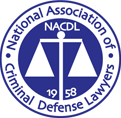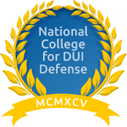- DUI
- Criminal Defense
- Florida DUI
- Traffic Offenses
- Drug Charges
- Marijuana Charges
- Violent Crimes
- Domestic Violence
- Temporary Injunctions
- Weapons Charges
- Theft Crimes
- White Collar Crime
- Juvenile Offenses
- Sex Crimes
- Violation of Probation
- Early Termination of Probation
- Seal or Expunge Criminal Record
- Criminal Appeals
- US Federal Offenses
- Misdemeanor Charges
- Felony Charges
- Co-Defendant Cases
- College Student Defense
- College Student Hearings
- FSU Students
- FAMU Students
- Florida Panhandle Arrests
- Extradition to Florida
- Bench Warrants / Warrants
- Emergency Bond Hearings
- Gambling Charges
- Drone Arrests
- Marsy’s Law
- UAS Infractions
- Introduction of Contraband
- Lying to Police
- Locations
- Case Results
- Our Firm
- Media
- Resources
- Blog
- Contact Us
A Historical Look at Criminal Jury Instructions
July 1, 2021 Don Pumphrey, Jr. Criminal Defense Social Share
Criminal jury instructions are a set of directions read to the jury before their deliberations that outline the legal standards involved, how the jury should evaluate the evidence, and what behavior is expected from them.[1] Florida Rule of Criminal Procedure 3.390 sets forth the judge’s responsibility of directing the jury with instructions. The rule states that there must be written instructions available for the jurors to view, and those rules also must be read orally to the jurors before they break for deliberations.[2] For more information on how jury instructions are formed during the trial process, please visit our blog here.
The Inception of Jury Instructions
Before the colonization of the United States by England, English common law ruled all. In those days, there was a common law rule that judges were not allowed to instruct jurors at all.[3] Their only function was to answer questions.[4] Though their only function at this time was to answer questions and watch over the proceedings, judges during this time were not great at either. For example, in the case of Abbot of Tewkesbury v. Calewe decided in 1314, the jury was tasked with deciding the ownership of land.[5] The jurors informed the judge that they do not have any legal training, asking the judge for guidance on navigating this complicated issue.[6] The judge merely replied, “say what you feel.”[7]
Luckily, judges in England eventually began to see the importance of instructing the jury on the nuances of the law. The judges would provide juries with essentially a summation of the case, which was oral, very general, and provided the possible inferences the jury could draw from the facts and what the relevant law was.[8] Similarly to early English law, American judges did not instruct jurors right away. They asked jurors to use their “common sense” to decide the outcome of legal disputes.[9] This worked for a short time while the country was mostly rural, but once the industrial revolution began, the legal disputes became a lot more complicated, and the country’s legal system needed uniform rules of law to apply.[10] Rather than developing instructions, the early American judicial system simply stripped the jurors right to decide questions of law, and many states even stripped judges of the power to instruct juries on the facts of the case.[11] Eventually, states began to insist that the judge instruct the jury on the law prior to deliberation, but this came with its own challenges. Drafting jury instructions took much time and effort, and often varied from judge to judge since there was no rule of uniformity in place. At this time, judgments were often reversed due to an error in jury instructions.[12]
Finally, in 1935, Superior Court of Los Angeles Judge William Palmer drafted an article recommending that the judicial form a committee to compile standard instructions in civil cases.[13] A committee was formed and published a book of standard instructions soon after, the decedent of which is still used in California, better known as the Book of Approved Jury Instructions.[14] Soon after, a set of standard criminal jury instructions were developed, called the California Jury Instructions: Criminal.[15]
Florida’s Adoption of the Standard Jury Instructions
The process for development and authorization of standard jury instructions originally consisted of two steps. First, the Supreme Court Committee on Standard Jury Instructions in Criminal Cases drafted and reported proposed instructions and changes to the court, then, the Court modified, authorized, or declined these instructions for use in opinions.[16] In 2020, the Florida Supreme Court drastically altered the jury instructions process.[17] The Court reasoned that “the current process for developing and authorizing standard jury instructions is more cumbersome than necessary, and that despite the caveat routinely included in the Court’s opinions, some wrongly believe that by authorizing for publication and use standard instructions prepared by the committees, the Court has ruled on the legal correctness of those instructions. Moreover, because of this Court’s authorizing of the standard instructions, trial judges are sometimes reluctant to modify standard jury instructions or to give other instructions requested by a party that may be more appropriate.”[18] In order to create this more efficient process, the Court removed itself from the jury instruction process and gave the authority to the committees to develop and approve, by a majority vote of two-thirds, any new or amended standard jury instructions to be used.[19] The new rules as promulgated by the Florida Supreme Court are[20]:
- A Rule of Judicial Administration 2.270 which states that the Court is removing itself from the process and the committees’ use of instructions should not be interpreted as an “adjudicative determination” on the legal soundness of the instructions.
- A Rule of Judicial Administration 2.580 (Standard Jury Instructions) which states that trial judges can use the standard jury instructions on the Court’s website if they wish, but trial judges may modify the instructions or give another instruction if they wish. If the trial judge modified an instruction or chooses to give a different instruction, upon timely objection to the instruction, the trial judge must state on the record or in an order the reason for modification or adoption of a different instruction. Additionally, each party requesting a modified jury instruction must send a copy of the instruction to the appropriate committee on standard jury instructions so that the committee may determine if the modification should amend the standard jury instructions.
Why Are Jury Instructions So Important?
As you can see above, before the arrival of jury instructions, jurors came up with verdicts based upon feelings and not the facts of the case or the rule of law. Jury instructions are important for several reasons. First, they help outline the law that jurors should follow in a particular case. Without these instructions, the jurors would not know the elements needed to prove a charge of assault or a DUI or what legal standards must be applied like “reasonable doubt.” These instructions also inform who carries the burden of proving guilt – the prosecution. Second, they are instrumental for record-keeping purposes and saving matters for appeal. If a criminal defendant is found guilty based on incorrect jury instructions, they will need to show the court of appeals the faulty instruction read at trial. This is why the instructions are read orally and typed.
Criminal Defense Firm in Tallahassee, Florida
Jury instructions are pivotal in any criminal case. Without them, those deciding the outcome of the criminal case of you or a loved one – the jury – would not know what defenses should be considered, what elements must be proven, and more. That is why it is extremely important to retain a qualified and experienced attorney who will ensure that the instructions read to the jury are best suited to the needs of you or a loved on defending a criminal charge. Don Pumphrey and the members of the legal team at Pumphrey Law Firm will fight to make sure that the instructions read are instructions best suited to your legal needs. Call a Tallahassee criminal defense attorney today at (850) 681-7777 or send an online message today to discuss your options during an open and free consultation with a criminal defense attorney in our legal team.
This article was written by Gabi D’Esposito
[1] Fla. R. Crim. P. 3.390.
[2] Id.
[3] William W. Schwarzer, Communicating with Juries: Problems and Remedies, 69 Cal. L. Rev. 731, 732-37 (1981).
[4] Id.
[5] J.H. Baker, AN INTRODUCTION TO ENGLISH LEGAL HISTORY 95 (3d ed. 1990) (citing Abbot of Twekesbury v. Calewe 39 SS 158, 161 (1314).
[6] Id.
[7] Id. at 95 n. 40
[8] Peter Tiersma, The Rocky Road to Legal Reform: Improving the Language of Jury Instructions, 66 Brooklyn. L. Rev 4 (2001), available at: https://capitalpunishmentincontext.org/files/resources/juryinstruct/imp%20jury%20instructions.pdf.
[9] Id.
[10] Id.
[11] Id.
[12] Id.
[13] Robert G. Nieland, PATTERN JURY INSTRUCTIONS: A CRITICAL LOOK AT A MODERN MOVEMENT TO IMPROVE THE JURY SYSTEM (1979).
[14] Supra note 8.
[15] CAL. SUPERIOR COURT (L.A. COUNTY) COMM. ON STANDARD JURY INSTRUCTIONS, CALIFORNIA JURY INSTRUCTIONS: CRIMINAL (6th ed. 1996).
[16] Joint Report No. 18-01, 260 So. 3d 965 (Fla. 2018).
[17] In re: Amendments to the Florida Rules of Judicial Administration, the Florida Rules of Civil Procedure, and the Florida Rules of Criminal Procedure—Standard Jury Instructions, No. SC20-145, 2020 WL 1593030 (Fla. March 5, 2020).
[18] Id.
[19] Id.
[20] Id.











